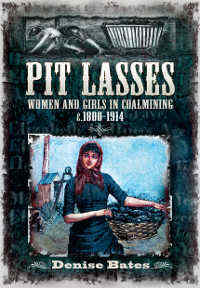
Pit Lasses
Search
Click on the links above
to visit a mining area
or enter and select the
name of a female miner
to search the website
Pit Lasses Research - Introduction

I remain interested in the female miners of 1842 and to supplement my research for Pit Lasses I am trying to discover what happened to the female witnesses to the Royal Commission of 1841.They had to stop working underground in coal mines after the Mines & Collieries Act became law.
If anyone can add to the information I have located about the female witnesses which has been included on the following pages, please contact me.
I would also love to hear from anyone whose ancestor was a female miner in the nineteenth century, even if she was not included in the Royal Commission report. If anyone has any information about the male witnesses in the Commission Reports this would also be welcome.The information presented has been obtained from census returns, BMD Indexes and other on-line sources. Some has been provided or verified by family historians. Select your area of interest from the list on the left or use the search box to find a specific female miner. Several miners may have the same name, check all options.
The numbers refer to the number allocated to the witness in the reports from the Royal Commission.
Coal mining disasters and accidents were well-documented in newspapers and details can be accessed via the British Newspaper Archive
Pit Lasses...displays a strong empathetic understanding of the role of women within the industry working underground or at the pit head.
Pit Lasses – An Update
It is over 175 years since females were banned from working underground in coal mines in 1842. With old newspapers now being much more accessible on-line than when I carried out my research, additional information has now become available about some of the women.
Chapter 12 mentioned the prosecution of an unnamed mine-owner from Wooldale in Yorkshire who was convicted of employing female workers in December 1843, a year after it became illegal. Mr J W Moorhouse was charged by PC George Haigh with allowing Hannah Moss (15), Elizabeth Moss (12), Nancy Goldthorpe (13) and Mary Senior (17) to work as hurriers at his Lidgett Pit, moving newly hewn coal from the face to the surface.
Some magistrates were mine-owners who did not like the new law. Others may have been uncomfortable when middle-class men faced charges, perhaps seeing crime as something perpetuated only by the poor. Magistrates at Holmfirth, the closest court to Wooldale, refused to hear the case against Moorhouse because one of their number was a mine-owner. It may have been a deliberate delaying tactic as PC Haigh then had to find a court which was prepared to hear the case, in addition to carrying out his normal duties. This led to questions in the trial at Huddersfield about why it had taken Haigh over a month to lay the charges.
Through his solicitor, Moorhouse accused PC Haigh of being vindictive and deliberately setting out to find these females who were dressed like boys to try to evade the ban. However, the evidence that the girls had worked regularly at the pit was irrefutable. Moorhouse was convicted and received the lowest penalty prescribed by law; a fine of £5 for each female working.
Interestingly, the newspaper coverage emphatically endorsed Haigh, declaring that he “deserves the thanks of the community for bringing this case to a public tribunal.”
Chapter 12 also mentioned Margaret Wignall, who had committed suicide by jumping down a pit shaft in 1844. At that point no reason for her action could be found. A newspaper which has recently become available on-line contains additional detail from the inquest. Margaret had been depressed about being dismissed from a post as a children's nurse so that a girl with more refined speech could be employed.
The deaths of four other female miners have come to light. All reflect mining practices discussed in the book.
May 1835 Martha Beaver was pulled down a shaft at the Law Pit after her clothes became caught in a corve.
January 1837 Jane Hodson (15) was killed at Mosborough when her clothes blew into machinery at the pit surface. She was dragged into the machine and both her legs were cut off. She was probably wearing a skirt. Safety was the reason why women caused a scandal by wearing trousers at work.
5th April 1839 Ellen Kaye and her two brothers were killed at Keighley when the chain of the lift cage broke as they were descending the mine shaft.
29th January 1845, a year after the ban on underground working took full effect, Hannah Hatherington (22) was killed when she fell down a pit shaft at Standish. Hannah was dressed in male clothing. It was stated at the inquest into her death that she had been dressing as a man to work underground for a year. Ann Harmer also worked underground at the pit.
My interest in the female miners of 1842 was sparked by the discovery that a 4x great grandmother, Rebecca Whitehead, was one of them. I have recently discovered that Rebecca's great grandfather had been a wealthy businessman and her grandfather had also been in comfortable circumstances. Whether mining was a free choice because of the relatively high wages available, or whether she was forced into the work from some misfortune remains unknown. Whatever the reason, her occupation was not something that I would have anticipated from these antecedents. It opens up a new line of enquiry about the background of the women who worked as miners.
More information will be added soon, so please revisit the site. If you use any of my information about the future lives of these mining women and girls, please acknowledge this website as the source.